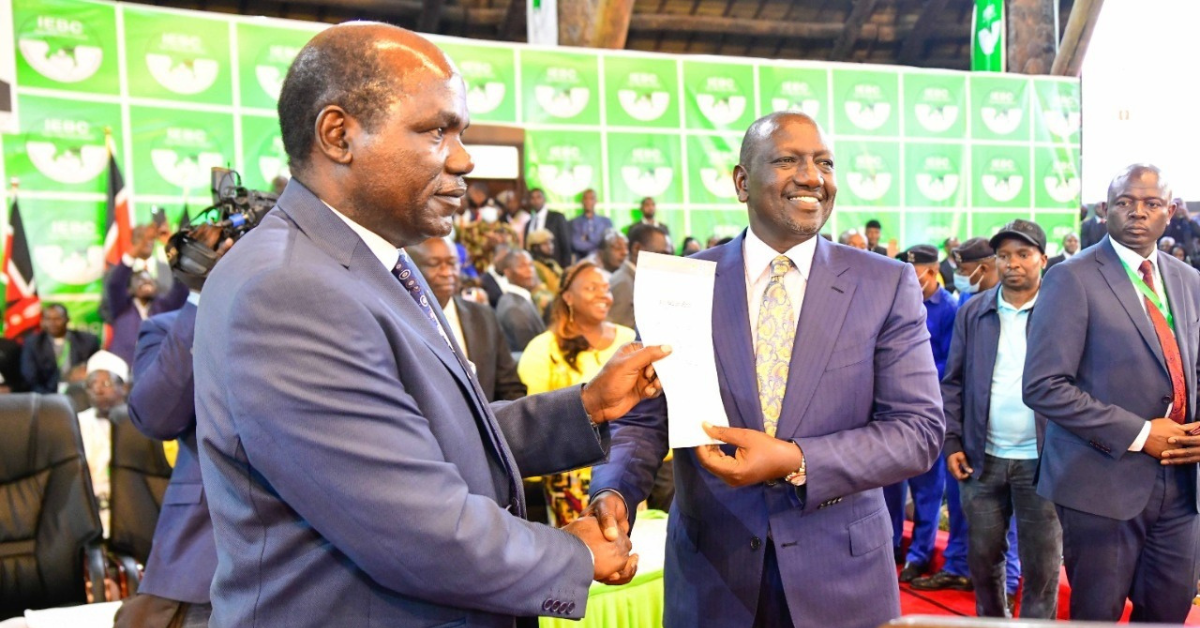Thirty years.
That is how long Kenya’s leadership and governance experiment has been running. If we treat the brief periods 1964/67 and 1979/81 as times when the leadership was finding its feet – the first, as Kenyatta tried to master the reins of power wrested from the colonial masters; and the second as Moi struggled to wield the baton abruptly thrust into his hands – we can see that the experiment, split in tens, has been running for 30 years.
Thirty years. There is something definitive and neat about 30, isn’t there? Something about it says, ‘correct’, ‘enough’, ‘just right’. Allow me to digress for a moment.
For those religiously inclined, 30 is loaded with significance: Jesus began his ministry at the age of 30. He shed his blood and died on the cross on Passover day in 30 AD.
Joseph, he of the Old Testament, is also said to have entered the service of Pharaoh, king of Egypt, at age 30 (Genesis 41:46). There is more. King David began his reign at age 30 (2 Samuel 5:4). Judas betrayed Jesus for 30 pieces of silver. On and on.
In modern times, 30 years is the length of a generation. In respect to Kenya’s leadership experiment, what are we saying? Simply this: enough already. Three leaders have each been afforded at least 10 years to experiment with their leadership skills.
This coming election represents the right moment to choose the next leader of Kenya based on an objective (you wish!) assessment of the results of three models of leadership.
The first 10 years (1968-1978) was a period of experimentation during which the founding leader sought to prove that autocracy, dictatorship, authoritarianism, tyranny, and totalitarianism, blended together with an occasional dash of bounded freedom, was the right recipe for a young nation. Jomo Kenyatta’s dazzling charisma and eloquence meant that his power and authority were self-evident – being felt more than seen. In a word, pseudo-imperial.
For a moment, the results were encouraging – higher and steady economic growth, a solid foundation for an educated middle class, a growing international stature and relative peace and stability.
But, as history attests, this model also laid the foundation for the ethnic and economic schisms that haunt the nation to this day. The evil tentacles of greed, corruption and impunity that we see choking the nation had their seeds planted during that period.
Of Moi’s 24 years of leadership, the period that best represents his style is probably 10 years following the end of the one-party state (1992–2002).
If Kenyatta’s leadership was pseudo-do imperial, with his power felt more than seen, Moi’s was a highly visible, highly muscular stamping of authority.
He may have started as a benign autocratic but once seared by the flames of the 1982 attempted coup, he seemed to say to himself: ‘They think I am weak? I will show them’. His vice-grip control over the state was both survivalist and defensive. In a word, pseudo-authoritative.
In style, his interventionist approach, coupled with an active peripatetic management style (perhaps a nomadic pastoralist itch?), meant that he was seen and felt everywhere.
Save for relative peace and stability and a positive focus on education and the environment, the results were generally disastrous: a diminished international profile, anaemic economic performance, a widening of ethnic and economic disparities and a stifling of the entrepreneurial spirit.
The final period of experimentation (2002-2012) is drawing to a close. During President Kibaki’s first term, Uhuru Kenyatta famously described his style as “hands-off, eyes-off and ears-off.” This may only be partly true. A more accurate characterisation of this style is pseudo-laisser-faire; a hell-may-care style. His delegative style means he is felt more by absence than presence.
We have seen the results: a flowering of the entrepreneurial spirit, higher economic growth and a freer society. On the downside we have witnessed political dysfunction, canonisation of corruption and impunity, insecurity and a deepening of ethnic divides.
The most serious consequence was of course the near collapse of the state that followed the last election. In its report, Justice Waki’s commission concluded that the post-election violence was, in part, “a consequence of the failure of President Kibaki and his first Government to exert political control over the country or to maintain sufficient legitimacy as would have allowed a civilised contest with him at the polls to be possible. Kibaki’s regime failed to unite the country, and allowed feelings of marginalisation to fester into what became the post-election violence.”
As we prepare to vote for the next president, we can draw lessons from the results of these leadership models. Kenyans do not want too much control. Nor do they want too much freedom. They want a leader who combines vision with wisdom; firmness with fairness; accountability with competence.

